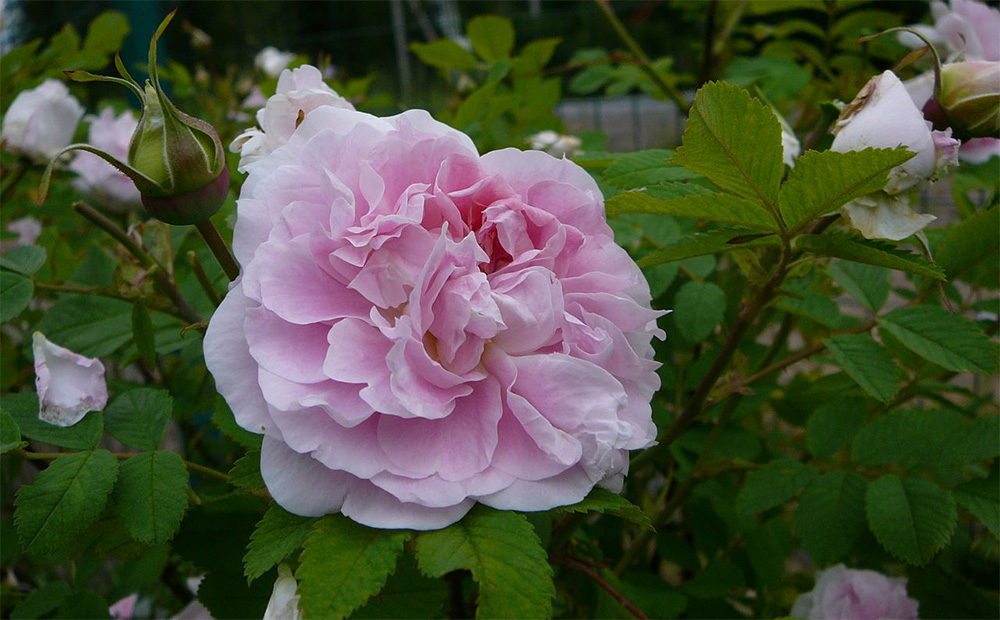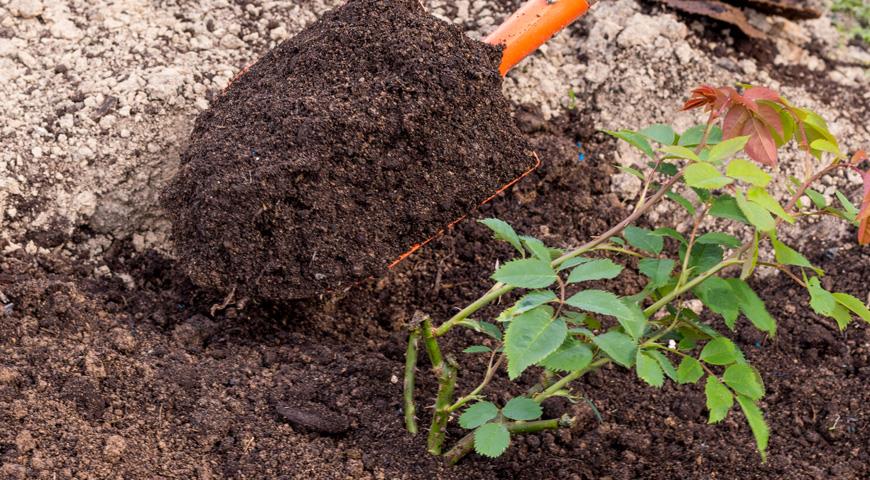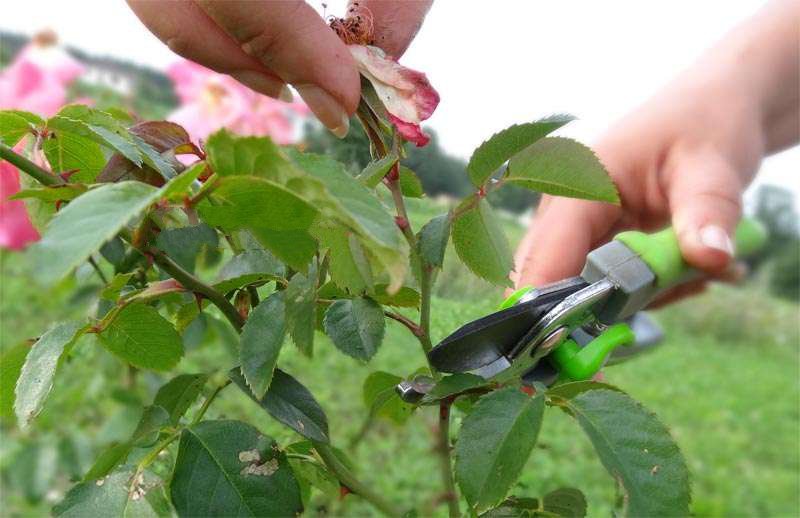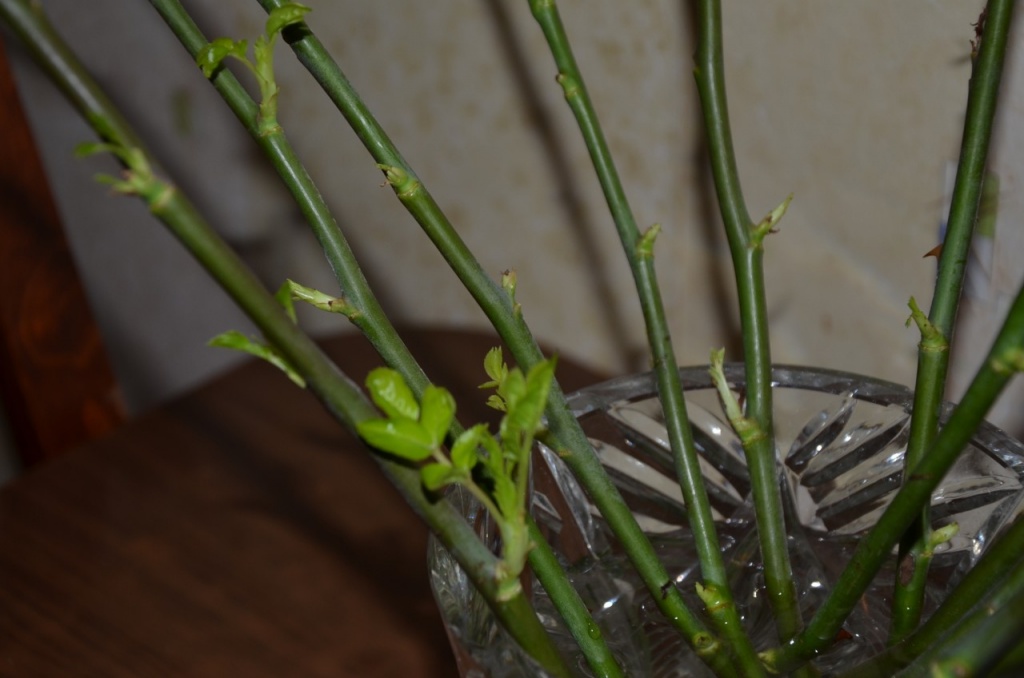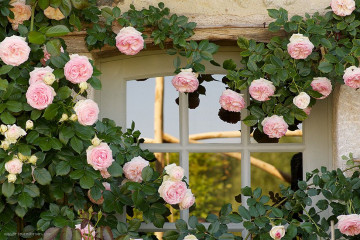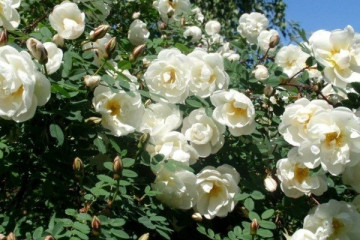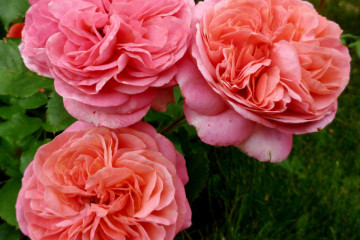Rose Martin Frobisher - description of the variety
Content:
In 2018, the rose variety named after the navigator Martin Frobisher celebrated its half-century anniversary. This rose was the first specially bred for survival in the harsh northern countries. Canadian breeders have developed a whole series in which there are 25 varieties of frost-resistant and fragrant roses. Most of these varieties, including Martin Frobisher, are ideal for growing in Russian climatic conditions.
Rose Martin Frobisher
Rose Martin Frobisher has strong reddish-brown shoots. The thorns are almost completely absent. Dark oval leaves with a pointed tip. The shrub reaches a height of 1.5 meters, sometimes a little more. In width it grows up to 100 cm. When flowering, forms large buds, 7-10 pieces per inflorescence. Flowers of a delicate pink shade combined with milky white.
This rose variety has a lot of advantages and is well suited for cultivation even by novice gardeners. The plant is unpretentious and can delight with its flowering even in a shaded area of the site throughout the season. The bushes are resistant not only to frost, but also to various diseases.
The disadvantages include:
- susceptibility to attacks of insect pests;
- rapid fall of petals during flowering in hot weather;
- intolerance to long rainy weather.
Thanks to the smooth, graceful structure of the shrub, the Martin Frobisher rose variety can be used in the design of hedges. The bush will also look good when creating a combined flower garden.
Growing
As a rule, a rose is planted with seedlings, but the planting material can be prepared in advance. For this, experienced gardeners most often use the cuttings method, but they can also germinate seeds. You can plant a rose at the beginning of the season, in spring, when the weather is warm. It can also be planted in late autumn, after the main harvest, 2-3 weeks before the cold weather.
If the place for planting is not predetermined by the design project, then the general rules that are suitable for this variety of roses should be followed. Martin Frobisher prefers loamy, slightly acidic soil and does not tolerate stagnant groundwater. The place should be sunny or slightly shaded. It is necessary to try to prevent the bush from being in the midst of a possible draft.
The well for planting must be prepared with a spacious one. Approximately 1 m in diameter and 65 cm in depth. Drainage is laid at the bottom if there is a possibility of access to groundwater. Ash, humus, sand and organic fertilizers are also added.
The seedling is placed in the prepared hole, carefully laying the root system. In order for the bush to take root well, the main roots should be located at a distance from each other. Cover with earth so that the root collar is hidden by at least 5 cm. This is done to protect the roots from weather conditions and to avoid the formation of rose hips.
Plant care
In the first 3 weeks after planting, the Martin Frobisher park rose does not need additional baits.Then organic fertilizers must be applied every 20-25 days. Water the plant with settled, not ice-cold water at least once every 3-4 days. It takes a lot of water to water one bush, since the roots are located deep.
This rose variety is very unpretentious and is able to withstand short-term adverse conditions. The Martin Frobisher bush can survive a brief spontaneous frost or unexpected drought. In the spring, the shrub needs nitrogen fertilizers; during the flowering period, the plant needs potassium and phosphorus.
Pruning
Rose Martin Frobisher canadian parkland needs frequent pruning. Due to the growth rate, irregular or weak shoots are often formed. From heavy rains flowering buds may stop developing. Also, by pruning, you can give the shrub the desired shape.
Mandatory pruning should take place at the beginning and end of the season. In the spring, remove all the shoots that could not overwinter. They are distinguished from the rest by their dark, almost black color. In the fall, all weak, young shoots, as well as damaged branches, are cut off. Young shoots contain a lot of juice, which means that at sub-zero temperatures, the branch will freeze.
After the rose has bloomed in the garden for 5 years, it is necessary to perform a global pruning. This is done in order to rejuvenate the shrub. To do this, it is necessary to completely cut off all the shoots at a height of 5-7 cm from the ground. Pruning should be done in early spring, and then new flower stalks will appear at the beginning of summer.
Wintering
Rose Martin Frobisher is a hybrid bred in Canada. Specialists of this country have been breeding varieties of roses that can survive in constant cold for more than 100 years. This plant variety is so adapted to frosty winters that it does not need special covering.
Preparation for the winter period is limited to pruning young and weak shoots, as well as adding soil to the roots. The soil must not be collected around the bush, but brought separately. Otherwise, you can accidentally expose the roots of the rose and expose them to freezing.
Blooming rose
The Martin Frobisher variety blooms throughout the season. The first buds bloom in late May - early June, depending on weather conditions. Flowering ends in autumn. Sometimes, if it rains frequently, there may be a short period of rest. At this time, it is necessary to inspect the shrub for the presence of buds frozen in development and remove them. You also need to cut off the buds that have faded in order to make room for new flowers.
If the rose does not bloom, this is an excuse to reconsider the conditions of detention. This may mean that the bush is very dry or, on the contrary, flooded. It is also necessary to check the soil for acidity and the presence of fertilizers. It is advisable to be alert in a timely manner, since if you do not fix the problem immediately, you can lose the plant.
Flower propagation
This rose variety can be propagated in several ways, for example, by purchasing a ready-made seedling. If the shrub is already growing on a personal farm or with neighbors or acquaintances, then you can prepare the planting material yourself, using cuttings. You can cook cuttings for propagation at any time of the year, with the exception of the winter dormant period.
Description of the process of harvesting cuttings:
- A young but strong branch is selected.
- Cut into 10-15 cm pieces.Slices should be done at an angle of 45 °. There should be at least 3 buds on the segment.
- Cuttings are placed in water with the addition of drugs that improve root formation for 10-15 days.
- When the buds begin to develop, it is necessary to leave 1-2 of the strongest on the handle.
- When the buds reach 2-3 cm in size, they must be separated from the cutting with a clean, sharp and thin instrument. It is advisable to grab a small piece of bark from the cutting. Set the shoots for a week in the same, only fresh solution.
- After a week, the shoots can be planted in a home pot filled with nutritious soil.
- With favorable development, the planting stock will be ready for the next season.
Diseases and pests
Frost-resistant varieties of roses are rarely subject to disease. Of those that can happen to this shrub, powdery mildew and gray rot should be distinguished. They are formed during prolonged rainy weather or frequent waterlogging of the plant. In order to get rid of the fungus, it is necessary to treat the shrub with preparations of the Topaz type twice a month.
The soft, succulent leaves of the rose are a strong bait for various kinds of pests. Most often, aphids, spider mites, caterpillars, pennits settle on a rose.
Rose Martin Frobisher is an unpretentious, stress-resistant and beautiful plant. In any living environment, she behaves like a true queen. With proper, incidentally uncomplicated, care, it will decorate the garden or summer cottage for many years.
